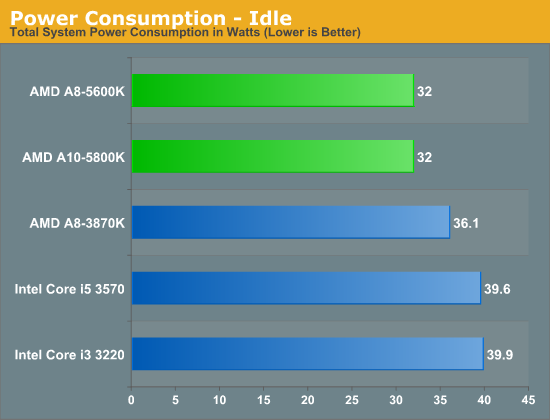My conclusion is this:
For regular folk (internet, word, excel, movies, some transcoding, etc without an OC), a core i3 still wins. Why? No Quick Sync on the Pentiums, afaik, otherwise i'd agree with Chris on the G2120.
For gaming with a discrete GPU: Core i3
For gaming with an IGP: Trinity
For cheap multitasking without an OC: Core i3
For exploiting as much work done as possible and exploiting all available resources with or without an OC: Trinity.
The thing is, as evidenced by your benchmarks, if you throw an average non-gaming workload at an A10 and an IVB i3, the i3 still completes tasks within the same time or in slightly more time than an OC A10 (except winzip with OpenCL, but that's because Intel/Nvidia are locked out).
So unless one's using a lot of OpenCL applications, or very heavily threaded ones, it doesn't make much sense to go the Trinity route. I think with OCing on the A10, the power consumption should off-set the price difference in some time (don't live in the US so don't know how much time). Without an OC they were pretty much the same in most cases.
As far as power consumption is concerned, even with a Intel Q8400 and a GTX560 + 2 sticks of DDR3 and 2 drives along with 4 fans (+3 if you include the CPU and GPU coolers) on an ATX mobo, i get 64W active idle. So you'll have to try and select as similar platforms as possible because there will be considerable variances.
Or, you could use CoreTemp, i saw the new version reporting the power consumption of SNB chips. Don't know if it'll work with Trinity chips though.


